Meet 3 physician entrepreneurs who are leading the way with innovative neighborhood clinics of the future.
Innovative Primary Care Practice Models Panel featuring: Yami Cazorla-Lancaster, D.O., pediatrician at Nourish Wellness and Pediatrics in Yakima, Washington. Pamela Wible, M.D., family physician at a community-designed Ideal Medical Clinic in Eugene, Oregon. Peter Lehmann, M.D., family physician at Vintage Direct Primary Care in Poulsbo, Washington. Facilitated by TaReva Warrick-Stone, second-year medical student and President of the Family Medicine Interest Group at Pacific Northwest University of Health Sciences College of Osteopathic Medicine.
* * *
TaReva Warrick-Stone: Our panel today is going to be focused on primary care innovation and we have a wonderful group of physicians here breaking ground in primary care. I have three questions to get things rolling and then we will be able to open up to the group. So the first thing is just to introduce yourself and offer anything you like in terms of specialty, background, residency, training after residency if you did a fellowship or anything.
Dr. Lehmann: My name is Peter Lehmann and I’m a 52-year-old family physician on the other side of the state in Poulsbo, Washington, which is kind of near Seattle but over on the side that is not too crowded. I went to George Washington Medical School in Washington, D.C. and graduated in 1990. I chose to have the military pay for my medical school because it was and is the most expensive medical school in the United States, and I didn’t want to come out in a lot of debt. I did a 3-year residency just outside of Washington, D.C. and got board certified in 1993 (and have done it every 7 years since then). I spent 3 years paying back the military for my time. I was in Fort Campbell, Kentucky and moved to Poulsbo, Washington 20 years ago to join the group I’m in now and you’ll hear more later.
Dr. Wible: Hi, I’m Pamela Wible and I’m a family physician and I’ve been practicing family medicine for 20 years. I’ve had a wild ride through many jobs that were not ideal that I will share with you and I am now in my ideal medical clinic for the past 10 years. It is the BEST experience ever. You all deserve the same thing. I love going to work everyday. I really don’t plan to retire because I just love what I’m doing so much. I actually don’t even like going on vacation because I miss seeing my patients. Maybe I’ll just give you a little fill-in on what I did my first 10 years after residency. You shouldn’t make the same mistakes as I did and just continue taking jobs that are not your dream job. You can go straight into your dream job if you like.
I had 6 jobs in my first 10 years because I never found one that I really liked. I started at a multi-specialty group in Oregon with hundreds of doctors. Then I did a summer stint with Yakima Vally Migrant Farmworkers in Woodburn, Oregon, and then I opened my own clinic in a carport in my house for all uninsured which was really fun, but I did not see how it was replicable and would solve the entire problem with health care in the country and I’m a real systems thinker so I was really looking for something that could be replicated. After that I jumped back into what I call “assembly-line medicine” and I worked in Washington state at a hospital-owned clinic in Lake Forest Park, outside of Seattle and then I went to Olympia, Washington, and worked in a single-specialty group with 3 family physicians who wanted me to become a partner if I signed on the dotted line and in order to ever leave that job I would need to give an 18-month notice and find a “suitable replacement” and that felt like a prison sentence to me so I couldn’t really sign anything like that so I moved back to Oregon and worked in another family practice office, part time only Wednesdays and Thursdays. And that’s when I got to the point of feeling wow if I can’t even be happy in family medicine only working 2 days per week that’s pretty lame. Something is seriously wrong. So from there I had the epiphany that led to the whole idea that I could really have an ideal medical clinic designed by the community and I could work for them. So that’s pretty much what I did. I led a series of town hall meetings and invited my community to design their own clinic. I pretty much told them I would do whatever they wanted as long as it was basically legal and I’ve been doing that for 10 years and it’s a blast. So highly recommend not just saying patient-centered, but actually doing it. Put the patient in charge. Have them help you because then you won’t be so tired because they’ll be doing all the work and they’ll feel honored and respected because they really are the center. There won’t be that invisible tug-of-war that I felt all the time in exam rooms at other offices where you were trying to put then on an algorithm or a paradigm they didn’t want to be on and they were there for another reason. So that’s my little story.
Dr. Lancaster: My name is Yami Lancaster and I’m here because of her. Her glitter has been rubbing off on me for the past few months. I’m a pediatrician. I’ve lived in Yakima for 6 years and practiced pediatrics at Yakima Pediatrics Associates until September 18th. I went to medical school at Texas College of Osteopathic Medicine. I’m also a D.O. Yay! I also have a Master of Public Health and a Master of Science which I did all in 5 years during medical school because I’m crazy like that (plus my first son). I also did an osteopathic manipulative medicine fellowship during that time, but because I decided to go into peds instead of geriatrics like I was initially planning, I don’t use it quite a ton. Since medical school, I went to residency at Cincinnati Children’s Hospital Medical Center in Cincinnati which was excellent training and then this was my first job here. The reason why I took the job here is because I’m a national service corp scholar and I finished my repayment in August. I did 2 years full time and then I did 4 years part time for the national service corp. As soon as my commitment was done I was ready to break away from the traditional US medical system and do my own thing and have been learning from Dr. Wible about how to do that. I’m super-excited to tell you guys about what I’m doing.
In addition to all that, my biggest passion is nutrition and lifestyle. Some of you may have been to my class that I gave last year. I am certified in plant-based nutrition. I’m certified food for life cooking instructor through the Physicians Committee for Responsible Medicine. I talk a lot about eating more plants and sleeping adequately and meditating and all that kind of stuff. I want to be able to have the time to integrate that into my practice because I think that is going to save a lot of lives.
TaReva Warrick-Stone: Thank you all. We are super-excited to have you here. Dr. Wible started this for us. I’m curious you are breaking ground in pursuing different forms of primary care delivery presumably because the delivery model that you were working in previously didn’t fulfill your needs as a physician or the needs of your patients. So I am wanting you to describe what that environment was like in terms of size, patient panel, support staff, so we have an idea of what you’re leaving and why.
Dr. Lancaster: I wasn’t super-miserable or anything like that. I worked Yakima Peds for 6 years. There I was one of 5 physicians and we had NPs and PAs (3-4 at a time usually). I started full time for 2 years, but honestly I am a super-efficient person. I can see a lot of people. It wouldn’t be unusual to see 30 patients per day plus you have to do your charting and return phone calls and sign a lot of paperwork. There’s a lot of paperwork in medicine these days. It’s not like it’s torture it’s just like it’s day after day after day it can be a little soul sucking. Then I went part time after my second son and I was okay for a while, but what happened was that I had a dream of serving the community and really helping patients in the way that they needed to be helped and for me that’s really talking about lifestyle. You guys know what our major problems are in the United States. These 5-minute appointments. You really only get 5-7 minutes per patient if you have a 15-minute appointment because half the time you’re just staring at the computer typing and like rushing and getting to the next one. So it really wasn’t enough time I felt to do patients justice as far as what I felt they needed to live a healthy life and to prevent chronic diseases (80-90% of which are preventable through lifestyle choices). After a while I became dissatisfied, discontent with what I was doing. I didn’t feel like I was doing my best work. I felt like it wasn’t excellent and I want to be as excellent as I can so in order for me to be excellent I felt like I had to leave the traditional US medical system and try it another way. I am married to a physician, a hospitalist, who makes a much bigger income that I ever did anyway and because of that I felt like I had the luxury and freedom to be a rebel and try something a little bit different. But I loved Yakima Pediatrics. I loved who I worked with (some of you guys may know the physicians there and they are awesome, amazing). Everybody was great. It’s just that we were all part of this system and there was no way we could break away because we were part of a community health center. When you are part of a big system like that you can’t practice differently. You have to see a certain number of patients and have to practice a certain way and so I didn’t feel like I had that freedom and liberty to do things my own way.
Dr. Lehmann: Okay. I will try to keep it short because you’ve got so many good stories to tell, I’m sure. Some of the things I could really piggyback on when I left the military I debated whether I wanted to be in academics because I really liked teaching a lot, but I really valued the idea of being independent and just being able to be a doc because in residency you spend a lot of time teaching younger students and what not so I ended up joining group that at the time was about 35 doctors multi-specialty group and it’s about 75 now. I will say a wonderful group of doctors and I have never had any complaints or unhappiness being a part of the group.
Ten years ago I got diagnosed with muscular dystrophy. I didn’t even know adults could get it. Kind of a long story how that happened, but by the time I realized that was going on (about halfway through my career) personally it really changed my life. I lost the ability to pretty much do everything besides walking. The last 10 years being in fee-for-service (FFS) which FFS means all the services you provide get paid by a third party (could be an insurance company, Medicare, Medicaid). It costs a lot of money and you have to hire quite a few people and spend quite a bit of money to cover that and your only option to stay ahead is volume. You’ve got to increase the volume of patients that you see and I have never liked that idea. In fact, I have spent most of my career seeing fewer patients that all of my partners. I just made less income as a result. So how does the muscular dystrophy fit in? Well, initially it just impacted my personal life. Took me a year or two to get okay with that. The last year or two has become very difficult to see a lot of patients. If you need to see 20 patients per day to make a decent living, turns out that only 1% of patients in general on any given day have a reason to come to the office. So if you need to see 20 patients per day, you need to have 2000 patients that are yours to fill your schedule. I probably got about 2500 patients. For the most part I love all of them, but trying to provide care for 2500 people and seeing 25 patients per day and doing all the things that you end up doing when you’re not seeing patients really has made it impossible for me to continue to do that For the last year and a half I have struggled with saying what am I going to do. I want to work until I am 80. I love being a doctor. I just hate the job.
I had just the dumb luck to hear a 5-minute talk by somebody who’s a pioneer like Pam, Dr. Josh Umbher in Wichita, Kansas, who right out of residency began a clinic called Atlas MD, and he set a model up where patients paid a membership fee directly and patients basically got (lawyers don’t like us to say this) unlimited care, which is really true. You need to be seen, you get seen. You need to talk to your doctor at night, you talk to your doctor at night. You need to talk to your doctor on the weekend, you talk to your doctor. The focus is all on being your patients’ doctor and that’s your salary. Everything else you provide is to be of benefit to the patient. Between spending time with Josh and one other doctor in the country who is kind of doing the same thing, I said, “Aha! this is my salvation.” Because I can’t work on a treadmill anymore. I want to give the kind of care that is slow, “slow medicine” is what I call it. I always ask my patients, “What’s the one thing you wish I had more of?” “TIME!” I want time. That’s what I loved about being in medical school. You get time with patients because nobody expects you to go fast.
So about a year ago is when I found this out and I said this is for me. If I do this I can practice as long as I want. I want to be old Doc Lehmann and somebody say, “He’s been my doctor for 40 years and he comes to my house (which I will) and he’s been there for all the significant events of my life and my kids have seen him and they don’t get scared because they know him really well. I’ve spent the better part of the last year planning to leave a very secure job fro which I make a very decent living to do something that I have no idea how it’s going to work out which is to say $10 per month for kids and $50 per month for adults and I’m your doctor. I work for you only. I work month by month. You’re not happy with me, you don’t trust me, you don’t view me as your partner, you have no obligation to me. I will be opening January 1. Of my 2500 patients, I’ve got 150 patients so far that have said they want to join me. Along the same lines, I’ve said to my patients we don’t have to play by anyone else’s rules. We can’ be illegal. We can make this clinic whatever we want. I want you to make this clinic with me. I’ve always told patients I get as much out of the office visit as you do and I want to be able to have the time to do that. I don’t know exactly how this is going to work out, but I know this is the right thing. It feels right. I know I’m going to give patients the care they deserve and I get to be a doctor again full time. So I’m excited and frightened at the same time. Honestly, I don’t see any other way to go. It is what being a caretaker and partner is. You just have to have time for people. So that’s the story and the good thing is that even thoughI have muscular dystrophy, I honestly do think I can do this as long as I want.
TaReva Warrick-Stone: Great! Thank you. That actually leads quite nicely to the next question so maybe Dr. Wible and Dr. Lancaster can fill us in on the details like Dr. Lehmann did on the practice that you are pursuing now and what that looks like in terms of patient panel, reimbursements, time, support staff as well.
Dr. Wible: Okay. First I want to give you a cheat sheet. You’ve got to write this down because this will totally help you understand what your job options are in the future. There are only 2 types of medical practices. You’re either in a production-driven practice or a relationship-driven practice. You will know the difference on your rotations whether you are in one or the other. In a production-driven practice people will be very frantic about time, people will be really worried about no shows, people will be counting between 20-30+ patients per day, and that is all about numbers. It’s a numbers game. I often call it assembly-line medicine. The other option is relationship-driven practice which is what I think everyone wanted when they filled out their personal statement to attend medical school. You wanted to have those deep (especially in primary care) satisfying relationships with people over time and over generations of their family. So it’s your choice. You actually do get to choose one or the other and you should have the right language to understand what you are in. So those are the 2 options you have. Underneath that you could subdivide those into 3 other options: patient-centered, physician-centered, or administration-centered practices. Again, is the practice set up for the convenience of administrators and people make big salaries, middlemen and other sorts of people in a big box clinic? Or is it set up for the convenience of the physicians, or is it really truly authentically a patient-centered practice? If you asked patients if they feel that they are the most important person here and that you are the center and they would say yes. So those are another set of options. Then as far as payment structure there are only 2 types of payments. You are either getting paid directly from patients or getting paid indirectly from a third party. Under indirect (third parties such as insurance companies)I will add that you could subdivide that into local or non-local. Like in Eugene we have PacificSource Health Plan located in Springfield right next to my town. They are a local insurance company. If I have trouble with them I can go right down across the river and sit on the desk of the woman in the front and figure out what is going on and they have really good customer service and so that is an example of a local insurance company.
What I was in before (all my practices except my carport clinic) were production-driven practices and they were all administration-centric or if they were a single-specialty physician-owned practice they were physician-centric practices. They were not centered on the patient. They were primarily indirect payment model. Currently my practice is relationship-driven. It’s patient-centered to the truest degree that I have ever seen. It is a mix of indirect and direct payments. Primarily the indirect payments come locally. So it is a community-supported medicine structure clinic, kind of like community-supported agriculture. I will say that they further you get away from a relationship-driven, patient-centered, direct-pay practice (and throwing in there local indirect payments) the further away you are getting from your patient. If you want to have a very deep spiritual, emotional, physical relationship with somebody over the continuum of time with multiple generations of their family at that deep level, you will be able to do that more likely with a relationship-driven, patient-centered practice in which the patient has some skin in the game financially or through barter or trade. I don’t turn anyone away for lack of money. People have bartered and traded services with me.
Health care is not passive. If you allow a patient to receive passive care—like I do not believe in charity care—they need to do something. If they can’t pay you with money they need to pay you with time or devote an equal amount of time to the community that you have just devoted to them. You’ve spent an hour helping them with their pneumonia, then they need to spend an hour at the soup kitchen serving people. They need to do something. This is not about gimme, gimme, gimme, take, take, take, don’t contribute anything. I am sorry to take so much time on this, but I really want you to understand the basic clinics that you have an opportunity to join when you finish medical school. Yami . . .
Dr. Lancaster: Yes, I completely agree with what Pam is saying. One of the things I want to say before I go any further is that people go into medicine for different reasons, but I think most people go into it because you truly want to help people and you have that calling in your heart to serve and you want to put your hands on people and help them in their suffering. There are going to be a small percentage of us who go into it strictly for the money. You can make a heck of a lot of money as a doctor. You can sub-specialize and see a bunch of patients and do a lot of surgeries and make a lot of money if you want to; however, if you are the kind of person who went into medicine because you want to help people and serve and do the best thing for people, it’s going to really clash against your ideals and you are going to feel bad and you are probably going to get depressed. So one of the things I will warn you about is we have so many years of delayed gratification and right now you guys feel super-poor and you see other people and you think I can’t wait to get my fancy car and my big house and stuff like that. I will just say choose wisely what kind of lifestyle you want to go into because we just downsized our house and I don’t plan to buy a new car until it dies because I don’t want to sacrifice my ideals anymore. I want to be able to have the freedom and liberty to serve my community the way I want to and not feel chained to a certain income to pay my lifestyle. Does that make sense? So think about that now because once you graduate from residency you are going to be rushing to buy all this stuff and fill your house full of stuff and that may make you stay within a system that you are not happy with because you have to pay back all that stuff. So that is something I wanted to say that is more philosophical. It’s important. Just keep it there in your mind.
I left Yakima Peds September 18th and since this summer I have been working on starting my ideal medical practice as a pediatrician. I just signed my lease on Friday. I have a location. Yay! The way I want to do it is kind of more similar to Pam, kind of a combo. I thought about doing the membership model and decided not to do it exclusively that way. I’m going to start as an out-of-network physician fee-for-service. So I am going to charge for the service I am providing on a cash basis. Now, the really cool thing is that there are lots of changes happening in the United States because it is not just us who are dissatisfied, it’s the patients that are dissatisfied. There are some new kind of cool insurances that are presenting themselves. One is a co-op insurance. I actually already have patients who have joined me and they have this co-op insurance and they function as cash patients and then they get reimbursed through the system (I don’t understand it fully). I already know there are a lot of these patients in Yakima that would potentially be interested in coming to see me.
And what is really col is that Pam has given me the confidence to do this and she says, “Don’t worry! Do your job the way you want to do it and people will come to you.” And it is completely true! People are emailing me, “Oh my gosh! Do you still have space? Have you stopped taking patients yet? Because I really want to come see you.” They are so desperate to just have a doctor that actually has time and will listen to them. It’s amazing! Even though it seems like it is a really rebellious sort of thing to do, it’s what patients want and it’s what we used to do a long time ago. It’s old-fashioned medicine that’s coming back. It seems rebellious because the standard medical system is not like that anymore. Now I am going to practice part time and the reason is I still have other stuff I am doing. I teach cooking classes quite a bit, I have an online presence that I am trying to grow, so I have a lot of other things that I am working on that I feel will also contribute back to the world and humanity and hopefully get us all healthier and so I am going to be practicing part time. And, of course, I am also a mom, I forgot to mention that. It’s kind of important. So three days per week scheduled appointments; however, like Dr. Lehmann, I plan to be available for after hours and weekends and I will also be doing house calls which I already started doing which is SO FUN! It’s so fun!!! Oh my gosh!
Dr. Lehmann: Aren’t they great?!
Dr. Lancaster: I just can’t explain how fun they are. I was just sitting there on the living room floor with a baby on a blanket and the other kids were all relaxed. It’s like completely different. I love it and I can’t wait to do more of that and I plan to do all my newborn visits up until 2 months at home so they don’t have to bring the baby in and expose them to germs. So I am really super-excited about that. And what’s really fun is I get to dream and help patients design the clinic with me. I put out a survey on SurveyMonkey which is what mom’s my age are into that technology. I’ve been getting feedback about what they want. What do you think is the #1 thing that they want? TIME! They want to have time with their doctor. That’s not high tech. They don’t want fancy stuff. It’s the same thing you were saying. It’s completely true. They just want you. They just want a caring doctor who wants to sit there and talk to them and listen to them. And help them. And reassure them. Because pediatrics is probably 75-85% reassurance. For real. It’s kind of not that hard of a job guys. It’s not rocket science. I’m super-excited and hopefully I will get enough patients to keep me plenty busy. I am also open to you guys coming to shadow me anytime if you guys are interested in seeing how it works. I hope to open my doors in March. I’m already doing house calls. We’ll see how it evolves.
Dr. Lehmann: I’m such an idealist. I am naive enough to believe that the more of us that do this and show that the system does not support us or patients the way it should, it burns out physicians, the more of us that do this, I actually truly believe we can save medical care in America. People do need insurance. You have to have it, but your primary relationship with the doctor who is going to be spending most of their life with you does not have to be expensive. I don’t know how many people here are considering going into primary care, but across the country its dying on the vine because although it is attractive in terms of the relationship, students kind of know that the job isn’t all that great. So to be able to see this and we get more people coming into primary care and going into a type of primary care that patients love and we reverse the here’s all the specialist and here’s the primary care doctors and the solution to America’s health crisis come from within between patients and doctors not waiting for some other people who don’t honestly care about us or patients. So I really hope that all of us are doing something that will actually be BIG.
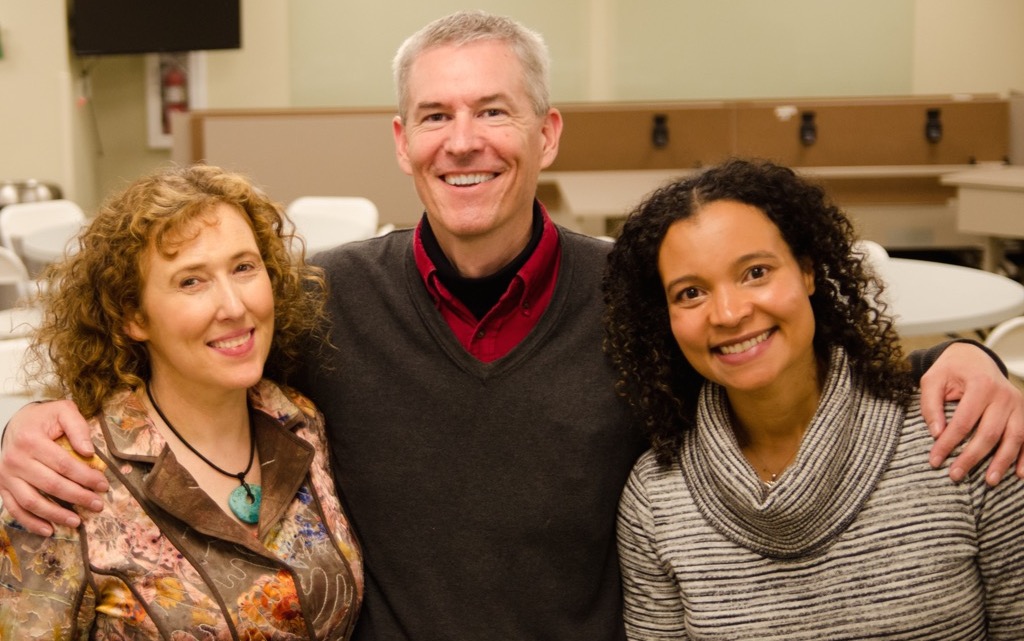
Dr. Wible: Two financial pearls: You have student loans to pay. I saw the tuition for your school and I know what you guys are having to pay to live in this beautiful small town. I just want to say that I realized when I first started my part time ideal clinic that I could make just as much money working part time in my ideal clinic as I could make full time working for the man. I really want to share all my financial stuff with you. Just email me via my contact page here and request my 10-page document with all my financial information that shows how you can earn more working less. I will just give you a quick example: A 99213 $100 appointment for sinusitis in the old job where I had an overhead of 74% that meant that I would only earn $26 pre-tax from that visit. I was able to get my overhead down to close to 10% at my no-staff (I do everything and I love it!) job and so that means that for that same person I would keep $90. It’s a real difference when you see a patient for sinusitis and keep $26 vs. $90. You literally can make 3 times as much per patient if you keep the money instead of working for a big system. Let’s just face it. These big systems eat a lot of money.
One other financial pearl I want to talk about is that we currently live in a country that handles an ingrown toenail the same way it handles a lung transplant. The same financing mechanism, the same infrastructure, the same overhead, and it makes no sense because I can do an ingrown toenail or she can do a well child check on the floor in your house for very little money, You don’t need a helipad, you don’t need a 5-star hospital, you don’t need a 5:1 staffing ratio, you don’t need the infrastructure—the 74% overhead plus that you would need to do a lung transplant—to do an ingrown toenail or a Pap smear. So I think we just need to understand that like car insurance, insurance is for catastrophes. It’s not for rock chips in your window, it’s not for filling up at the gas station, it’s not for changing tires on your car. Insurance is for a lung transplant. Insurance is for big cost items. And we should let people at the community level have their relationship-driven, patient-centered practices and those payments can be worked out locally in a way that serves everyone and that’s how things were done before 1965 anyway.
Dr. Lancaster: I can’t be super-confident like Dr. Wible is yet because I haven’t actually started, but from my projections seeing 30 patients per week, I should be able to make the same as when I was seeing 30 patients per day.
Dr. Lehmann: I’ll echo that.
Dr. Lancaster: But since I haven’t started yet, I can’t tell you for sure that it is going to work here in Yakima. I am hopeful. I am very cautiously optimistic that it might work. That’s what I have it projected out and my overhead is about 17%. My space is a little bit more expensive. But I also do some side jobs. I teach cooking classes and do those kinds of things so the actual medical overhead will be closer to 15%. I’m also going to be solo-solo just like Pam. I’m going to be the nurse, the doctor, the MA, the receptionist, the everything.
Dr. Wible: Which is super-fun!
Dr. Lancaster: I’m excited!
Dr. Lehmann: I’m doing one staff. My overhead is about 20%. For me, my medical assistant (who has been with me forever) we are doing this together. She is hourly in the system I work in and she is salaried with me because there is no way I’m paying someone hourly who is as intimately involved in making this as anybody else. I debated doing it by myself, but part of this being 52 and the muscular dystrophy and the getting tired, I said, “Gina you need to just stay with me. You need to make sure I get everything done.” My overhead is going from 60% to 20%. You can do a lot with that. You can keep your income the same. You can say, “I don’t need that income. I’ll take that loss of income and do all sorts of things that I wouldn’t have been able to do before because it’s going to cost . . .” It’s really freeing. Only your imagination limits you.
Dr. Wible: By the way, there’s no right or wrong way to practice medicine. If you love the fast pace of urgent care and you want to see 80 patients per day and you love it and the patients are getting great care, then go for it! My whole issue is that doctors should not be practicing medicine as victims. You can not be a victim and a healer at the same time. You need to live your dream, the one that brought you to medical school. You absolutely do to prevent depression and we have a high suicide rate in this profession. If you are going to stay here and practice medicine and call yourself a doctor, please be congruent with the original dream that brought you to medical school in the first place.
Dr. Lancaster: Yes.
Audience question: (see below)
Dr. Wible: To repeat the question, if the patient has trauma or needs tertiary care services, how does that fit in with what we are doing? For me it’s the same as if I were working in another clinic. If it’s out of my scope of practice, they go to the place where people can handle what their condition is. And it is paid for by their insurance probably.
Dr. Lancaster: It would be the same for me too.
Dr. Lehmann: Yes. Exactly. I tell my patients, “Okay, I’m a smart guy. I know a lot of different things. I’ve delivered babies. I’ve done all these sorts of things, but there are things I can’t do. What I am offering is not that. I am not offering everything.” Patients say, “What if I need to see a specialist? What if I need to go to the hospital?” I say, “How do you do that now?” They say, “I go to the hospital because it’s really serious.” I say. “Well, that’s how you are going to do it down the road.” For me, since I chose to do a monthly set fee, it’s a set fee whether they choose to come in every day if they are a hypochondriac and I say I’m going to make an appointment at 1:00 every day until you get tired of coming in. I couldn’t do that in the world I’m in now. I look and I say, “I work for you. You are paying me to work for you so I’m going to do everything I can to take care of you within what I’m allowed to do, what’s within my comfort level. I tell my patients, “If you call me at night and it really can’t wait until the morning and it’s not an emergency room visit (you cut yourself with a kitchen knife) I will say, “Can you meet me down at the office in 30 minutes and I’ll see you down there and we’ll take care of it tonight.” It doesn’t cost anything if someone sees me one time or 100 times because they are paying me to be their doctor so that’s they way I’ve set it up and I work for you only and I do everything I can do for you when you need it. Because nobody determines really when they need care and so to do this you have to be the kind of person who is willing to say okay I’m not just going to be in a group where I have to take call one week out of the month (which is very alluring). A lot of patients wonder well, I’m paying you and I have insurance so how does that work? You use our insurance the way insurance is supposed to be used for the things that cost a lot of money and they are so urgent you’ve got to get there. I can’t take care of heart attacks in the office.
Dr. Wible: And, by the way, even though I’m on call 24/7 for 11 years now, my patients rarely call me because they get 30-60 minute appointments. They get their needs met when they are supposed to get their needs met which is during an actual office visit. There’s rarely any random, oh-by-the-way phone calls. I also only do refills during appointments so I prevent the 30% of stray irritating faxes and phone calls clinics get because they are not thinking ahead. So being on call 24/7 feels like I’m on vacation because nobody calls me because they are all on autopilot. I’ve train them well. I do my job well. They know when to come in. People [who have no experience with this type of practice] can’t believe this. They feel they will never be able to get away from their patients. It’s amazing.
Dr. Lehmann: It’s like a two-way street because they respect you the way you are respecting them. Of course, I haven’t opened, but this is what I tell my patients. They say, “Well I wouldn’t bother you at night, Dr. Lehmann.” I say, “No, if you need to please. I’m your doctor. I’m here for you.” Everybody who I know who does this says they don’t get many calls at night. Because patients know they can get in and see me that day if they need to and we have a really close relationship and we value each other’s time and if they really call me for something. it’s because it is serious.
Dr. Lancaster: The current system is very depersonalized. The production-based system is very depersonalized and it leads to desperation for a lot of patients because when they call, they are not sure who they are going to get or whether they will talk to somebody who is an actual person. They don’t know how long it is going to be before ether get called back. And it makes people panic and then you overreact, overreact, and everybody is overreacting all of the time. Everybody is like crazy all day long. The way that you do it when you are relationship-based system like this, they know who they are calling and they kind of think about it. Should I call for that or not? What’s really important to call about and what can wait for the morning? It’s not the same as this desperation-based depersonalized system.
Audience question: 1) Do you initiate bartering or does the patient initiate bartering? 2) What is the demographic and how do you care for patients who can not necessarily afford it?
Dr. Wible: So the question is about economic disparity and how do we fit that into our practices and who initiates the whole bartering idea and what do you do? I personally do not turn anyone away for lack of money and I live in a town that has rich people and poor people and I see a mixture of people. I kind of like the blue-collar middle-of-the-road crowd. Also I love the people who are off-the-grid and live in the woods on hardly nothing in cabins. I get a lot of third-world-style medicine at least when I first started. The bulk of these people who see me they all pay their iPhone bills and their other bills every month and the things that they value they pay their $100/month bills and it’s not like you are charging them something that is astronomical ($10-50/month). That is cheaper than cable and cheaper than their iPhone and somehow we think that these people don’t want to pay. Well, they don’t want to pay for disrespect, for a system that abuses them—and us! They don’t want to sit in an appointment with you and argue about you putting them on a algorithm or paradigm that they don’t want to be on so if they are not paying you, look at yourself in the mirror and try to figure out why they are not paint you. In 11 years there have been < 1% of people who really could not pay me. In my practice patients get a 30% discount for paying at the time of the visit so people don’t want to give that up so they pay at the time of service to get that really good discount. For the rare occasion when somebody is really financially strapped, I’ve allowed them to make me handmade gifts for my gift basket that then get recirculated out to other patients as prizes. I let them donate what their love and work is in the world if they are an artist and I re-use all this and give it back to other patients. Because I don’t necessarily need all the things my patients make. What do you guys do?
Dr. Lehmann: I charge $10/mo for kids up to age 20 and $50 for any kid over the age of 20. My philosophy is that I don’t feel that $50/month is an outrageous amount of money for me to basically say that I am here for you 24 hours per day. I do think there are people who are destitute. Certainly in my current multi specialty ground I haven’t had to deal with that. I agree with Pam. I don’t think I would just give somebody care for nothing. Just cause if somebody gets something for free, there is a certain sense about how they value it. Giving something is important. I even thought, what if I’m doing really, really well a year from now, I could offer people a free membership. The more I thought about it the more I don’t want to do that. I want to have some other means, that they have some skin in the game, this is a two-way street. I also believe to me that someone who has a lot of money gets the same care as someone who doesn’t have a lot of money is very appealing to me. One of my mentors who practices back east, he’s got a picture of the CEO of one of the big insurance companies in the state where he works sitting in the waiting room literally next to a guy who lives in a box and scrapes together the money each month to be seen. They each get the same care. The guy who’s living in the box sees the guy in the fancy suit and knows I get the same treatment that he gets. I’m pretty big on this is what it is and you know the value I’m bringing to you and you can decide if that price is worth it because that’s they way life works.
Dr Wible addendum: As I’m transcribing this lecture, I’m reflecting on the patients I saw today: First patient: woman living in he car. Next patient: multimillionaire. (Just had to add that!)
TaReva Warrick-Stone: I just want say real quick that I know first years have anatomy lab so if you need to go, please do so. Just please sign in and grab one of Dr. Wible’s books. Also all 3 of these doctors are going to be at the banquet tonight so if you come from 6:00 – 6:30 it will be all mingling time so you can ask more questions then as well.
Dr. Wible: And I will stay here as long as it takes to answer everyone’s questions.
Dr. Lehmann: I’m not going anywhere.
Audience question: Similar to the access question that you just asked, what about language barriers? How do we improve on that? It raises some difficulties with the direct service model requiring that common culture, common language in a way that mass-production (I work for the farmworkers clinic) and I’m realizing that the direct service model (especially being that I am in academic medicine) puts the onus on the university to improve the access or the physicians in training to match the culture and language needs of the community other than individual desire to make sure you have those skills.
Dr. Wible: So the question is the language barriers for people who are non-English speaking, who is taking on the burden of this population? How do our models contend with this?
Dr. Lancaster: Well, I speak Spanish. I’m Panamanian. I didn’t really answer the other question. I’m still evolving the way I’m going to practice since I’m not opening officially until March. Bartering is legal. They kind of do ant you to pay taxes on it when I asked about that. You have to put a value to it somehow and declare it. Okay. Whatever. I just speak Spanish, English, and a little bit of French, and maybe 5 signs in sign language. Besides the English and Spanish, I don’t know how I will reach the other people. There are language lines you could probably use and stuff like that.
Dr. Lehmann: I’m going to give you 2 answers. I speak Spanish and it gets better and better because I have a lot of patients currently who I think will follow me who speak zero English. They may have been in the country 20 years. They live kind of in a familial, they are kind of insulated. I speak Spanish which helps. I don’t know if you’ll be able to hear this, but I think this costs about 4 dollars. This is an app called “SayHi.” I know it’s available for iPhones and I guess it’s available for Androids and you can go between English and any language and backwards. So I don’t know any Japanese, but I’m gonna say, “I’m very pleased to meet you today.” [the phone translated it into Japanese] alright? So it’s all in Japanese characters which I don’t understand. Ok. Let’s do Russian. “Thank you for coming to the office today.” [Phone translates into Russian and Russian-speaking student verifies that it is correct]. It shows me that it recognized thank you for coming to the office today so I see it in English and it says it Cyrillic characters I don’t know what. Here’s this little button here in Cyrillic characters in Russian so they can click over here on Russian, they say something and it comes out in English. It’s a little slower than, but there’s 30 or 40 languages in this and it is 4 or 5 dollars.
Dr. Wible: And with a 30-60 minute office visit, instead of a 5-minute office visit, you are likely to be able to do a good job.
Dr. Lehmann: Yes! It’s great! So I pick up some bits of language. In my clinic 30 minutes is our minimum appointment. I tell patients we do not have a maximum. We take what we need. Someone says, “My parents are getting older and we need to talk about maybe going into assisted living. I say, “Okay do you think 90 minutes is enough time? Can we get it down in that timeframe? Should we book a little bit longer? Because you’re not volume-driven anymore. You are quality-driven. And if I have 500 patients and 1% of people really need to come to the office that means on average I might see 5 patients per day physically in the office. I may talk with others, but time no longer becomes the thing that drives what you have to do. So something like this is actually fun!
Dr. Wible: Yep! And that is awesome! I majored in Spanish in college so I can handle Spanish-speaking patients as well and that was exactly the population that I wanted to care for primarily it just didn’t quite work out that way.
Audience question: How do you guys logistically deal with people you kind of get in the timeframe that you have for the patient. If you have some patients that take longer, are people in your waiting room just really understanding or . . .?
Dr. Wible: So what do [waiting] patients do if you end up in a 90-minute visit with somebody? I think you are scheduling the appointments yourself so nobody is waiting.
Dr. Lehmann: Correct.
Dr. Wible: I’m scheduling my patients myself so if I am running more than 10 minutes late I have a gift basket and people get to pick a gift like a locally-made soap or lotion. I know my patients like the back of my hand so I know when the traumatic brain injury patient is scheduling an appointment with me that I want to put her at the end of the day because it takes her longer to get her sentences out. You know what I mean?
Dr. Lehmann: If you live in the world that I’m leaving (and you’ve been in), you’re not scheduling the patient. You give maybe advice to the scheduler about these sorts of problems need kind of about this amount of time, but in the old days the nurse and/or doctor by themselves you know your patient, you know what they need, you’re not gonna get really surprised. Ya know we have patients right now who call in and say, “I’m coming in for a rash.” Well, that’s not really what they are coming in for, but they wanted to say something to the appointment clerk that wouldn’t be revealing of something really personal. Well, if I answer the phone and I say, “What are you coming in for?” They’ll be likely to tell me. Or I’ll say. “Is there anything else you think that you’ll want to cover? We want to make sure we have enough time.” We block the time out. What I would do if even that was beginning to push it (the gift basket is a great idea) is that I would say, “Gosh we booked an hour and I’m surprised that this is going to take longer than that, can we maybe follow this up with an appointment tomorrow or the next day because I know I have another patient waiting and I really want to respect everybody’s time.” If you are giving people a lot of time and you are running over, unless you just have to, it’s about respect and people get it. When you’ve got a 15-minute appointment and you say you can only really have one issue and pick what is the most important thing. I know you have a list of 4 things, but you’ve got to pick the most important because we don’t have time for 4.
Dr. Wible: What is interesting about your question is that it is a real reaction to a failed production-driven model so this isn’t really an issue for us. I rarely in 11 years have run more than 10 minutes late.
Dr. Lancaster: And we’re still using technology. She has her own homemade electronic medical system. I’m using a free electronic health system (EMR) and I’m going to do scheduling and I will allow some online appointments to be made so I don’t feel the appointment times will be vague for me. I like having times in my head. And like they do my minimums are probably going to be around 30 minutes and 45 minutes for a well child check.
Dr. Lehmann: We’ll block them out. We’ll block 90 minutes out.
Dr. Lancaster: Gone are the days of double-booking.
Dr. Lehmann: If I am going on a house call I will book on the schedule that I am going on a house call. It’s just an appointment that’s at the home so somebody else doesn’t get booked and wonder where is he. So you just book it that you are going to somebody’s house.
Audience question: What is the personal skill level required to see fewer or greater numbers of patients per day. When you are seeing 30 patient per day . . .
Dr. Wible: So the question is what is the skill required or that you would be developing if you are seeing 30 patients per day versus 30 patients per week?
Dr. Lancaster: Okay. So this is a great question! This is something we recently discussed in our little group that we had for her class. Whenever you are seeing 30 patients per day, there’s stuff that you could probably handle yourself that you don’t because you don’t have time so you are pretty much a referral machine.
Dr. Wible: Or a prescription machine.
Dr. Lancaster: Ya! You are seeing a lot of stuff, but you’re not doing it yourself. But I am so excited that now I’m going to be able to have time to okay let me look up the best treatment. I can actually call the subspecialist and say, “Okay what would you do for this? Let me handle it myself and see if I have problems and I’ll send him to you eventually. But when you are seeing that many patients per day you do not have time. You’re just like, “Okay, I don’t know how to do this off the top of my head so dermatology. Okay, I don’t know how to do this so rheumatology. Ya know? So that’s a really good question! And that is one way to think about it. If you see a ton of patients, you are gonna see a lot, but you are not going to be able to handle it all yourself. You don’t have time.
Dr. Wible: And one thing that I started doing that I highly recommend because it is so much fun is that if you do end up having to send one of your patients to a specialist after multiple 30-60 minute appointments with them, you have the luxury to now go to that appointment with them!
Dr. Lehmann: I already have that.
Dr. Wible: It’s so much fun!! Basically the way I practice I feel like I’m a smart doctor and a perpetual medical student at the same time. It’s like I can always approach every with the bright-eyed excitement of the first day of third year and spend as much time as I want. It is so much fun!
Dr. Lehmann: Yes. I tell my patients, “What if I came with you to your specialist visit?” They’re like, “What?”
Dr. Wible: For $10 per month I get all that?
Dr. Lehmann: Ya! We just block it out. Then I get to know what the specialist sys. I get to learn and they don’t miss something that I know that maybe the patient forgets to say. It’s pretty cool!
Dr. Wible: Ya!
TaReva Warrick-Stone: I want to give our panelist a big round of applause, I you haven’t signed in yet please do so and grab one of Dr. Wible’s Pet Goats & Pap Smears books. And all 3 of our panelists today are going to be at the banquet tonight for more questions.
Grab your free guide to launching your ideal clinic here!
* * *
This panel was filmed on October 29, 2015 at Pacific Northwest University of Health Sciences College of Osteopathic Medicine in Yakima, Washington. Director of Photography: GeVe. Music by GeVe.




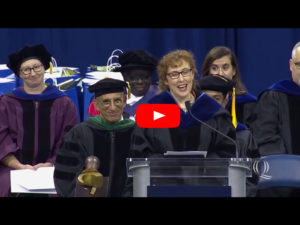
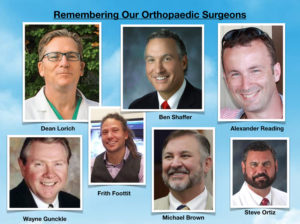
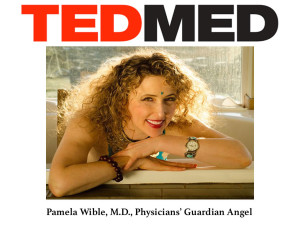
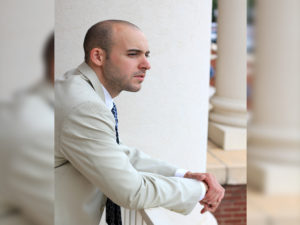

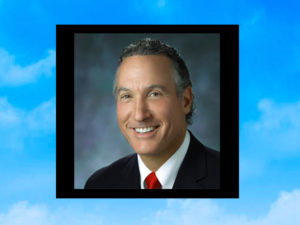

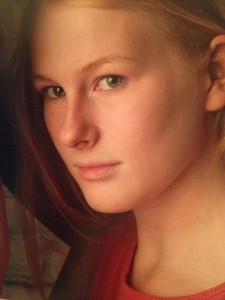

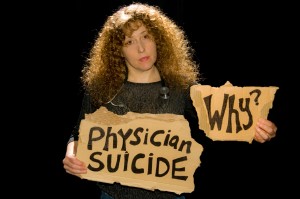
thank you for sharing!
this was great to watch and very motivating to follow in your footsteps!
Question for you, did you opt out of Medicare?
Are you still billing insurance companies yourself or giving the patient a copy of their bill and having them submit to insurance for reimbursement?
Yay! Glad to inspire 🙂
1) After one year I opted out of Medicare. Read this and watch short video –> https://www.idealmedicalcare.org/blog/i-love-old-people-but-i-will-not-accept-medicare/
2) I still submit primary (not secondary) insurance claims as a benefit to my patients. I am out-of-network now (was a “preferred provider” for 10 years which just meant I allowed insurance companies to undervalue me and pay me less)
You may be required to see a doc through workman’s comp. The paperwork is out-of-control for these workplace injuries and so often there a specialized docs who do this.
In my town (Eugene, Oregon), cases are handled at Cascade Health.